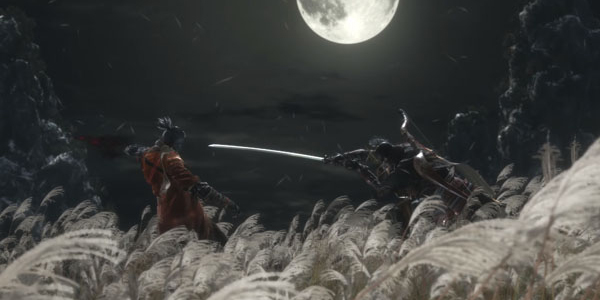
All’E3 2018, Microsoft ha avuto modo di mostrare per la primissima volta Sekiro: Shadows Die Twice, il nuovo gioco di From Software (che sarà pubblicato da Activision), che dovrebbe vedere la luce il prossimo anno su Xbox One, PC e PlayStation 4.
Grazie a PC Gamer entriamo in possesso di alcune importanti informazioni su Sekiro: Shadows Die Twice e la più importante è quella che riguarda il genere di questo gioco, ovvero action adventure e non soulslike come in molti si aspettassero.
Ecco tutti i dettagli:
- Sekiro: Shadows Die Twice is set in a reimagining of 1500s Sengoku era Japan. You play as an unnamed shinobi, tasked with protecting a young lord of mystical lineage, who is left for dead when a powerful samurai attacks and chops off his arm.
- It is an action adventure game, not an RPG. There are no stats, armor, weapons, classes, or multiplayer. But there are “Prosthetic Attachments” that you earn as you explore, which can be attached to the “Shinobi Prosthetic” that replaces your hand and help you progress.
- While the protagonist wields a katana in his right hand, the prosthetic arm that constitutes his left can be attached with various offensive and supportive tools. An axe add-on can destroy an enemy’s shield; a firecracker can stun enemies; a torch can set them ablaze; and a shield can block attacks. These tools can be combined with the katana. For example, you can thrust the katana through the torch arm to set the katana on fire.
- Environments are built vertically. You can use a grappling hook to reach cliffs, rooftops, and more. Based on PC Gamer’s impressions, the grappling hook is not locked to specific grapple points. It can also be used in combat to pull in enemies or get behind them.
- Combat is based around posture. Enemies can easily block attacks, but will gradually lose posture. Once lowered enough, you can finish them with a “Shinobi Death Blow.” However, you will also lose posture as you are attacked, unless you block perfectly—which doing will cause the enemy to lose posture instead.
- The Kanji symbols that sometimes appear above the character’s head serve different functions. A danger symbol, for example, signals that the enemy is about to use a special attack.
- Knowing what the incoming attack is and how to avoid it requires reading the enemy’s animations. Enemies will have patterns of attack. Some enemies can use sweep attacks to knock you down that cannot be blocked, but can be avoided with the jump button.
- The game’s “light stealth mechanics” include instant stealth kills, pressing up against walls, hanging off ledges, and crouching in grass to stay hidden. You will be able to finish off any enemy that comes close when hidden.
- You can approach situations in various ways. For example, in one situation a woman would alert the guards if she spotted you. So you can kill her to remain safe.
- The boss battle of the demo is the Corrupted Monk, who is a large woman with a naginata. Her attacks can be predicted and dodged or blocked with the help of the Kanji characters that appear above the player’s head.
- When you die, you can revive immediately and return to combat. Though dying causes enemies to immediately lose interest in you and return to what they were doing. That said, you can use death as an “opportunity” to surprise and kill enemies who were not expecting you to revive. However, there is a limit to how many times you can revive.
- Sekiro has an expansive and interconnected world that players are free to explore.
- Many gameplay scenes will involve “cat and mouse” segments with large monsters. For example, in the demo the player had to wait for moments when the large snake monster that appeared in the trailer was not looking to make his move to traverse a canyon. PC Gamer describes these as appearing more along the lines of environmental puzzles than traditional boss fights.
- There is a currency system, but it is different from the Souls and Blood Echoes systems of Dark Souls and Bloodborne. It is used for some sort of upgrade system for your gear.

